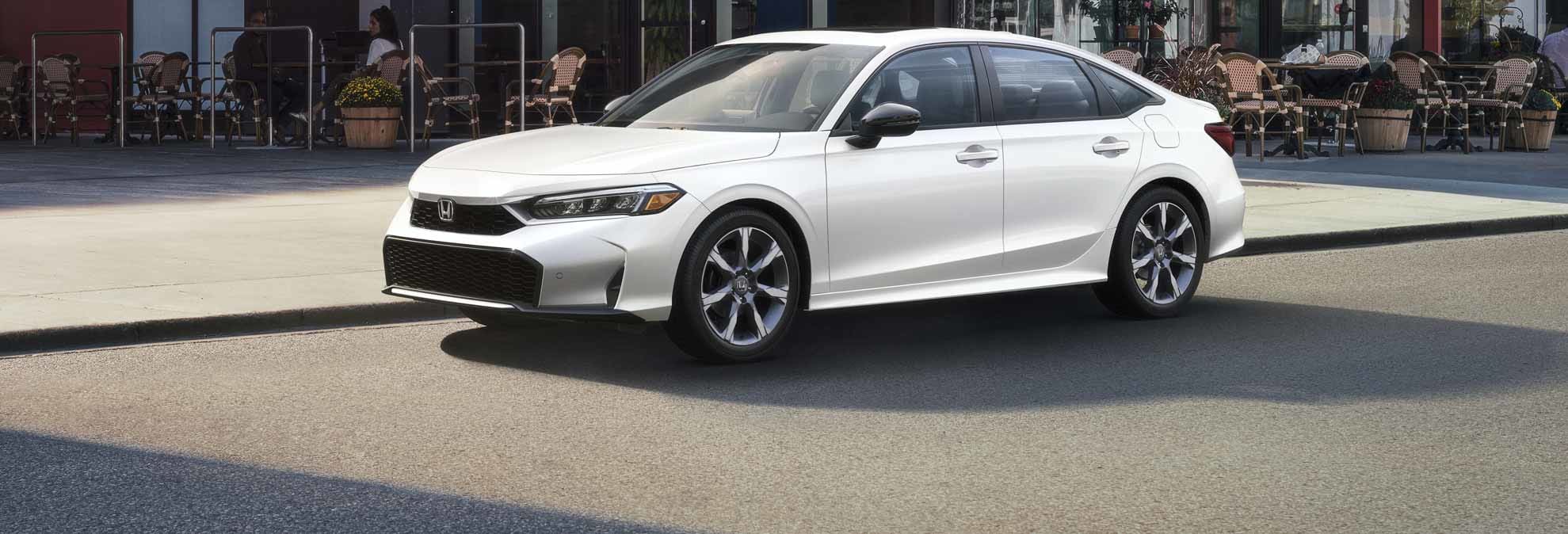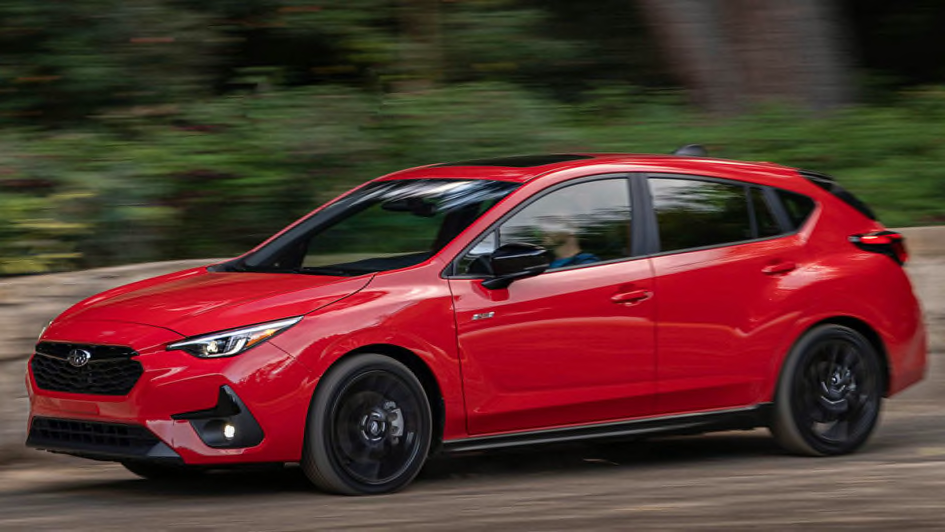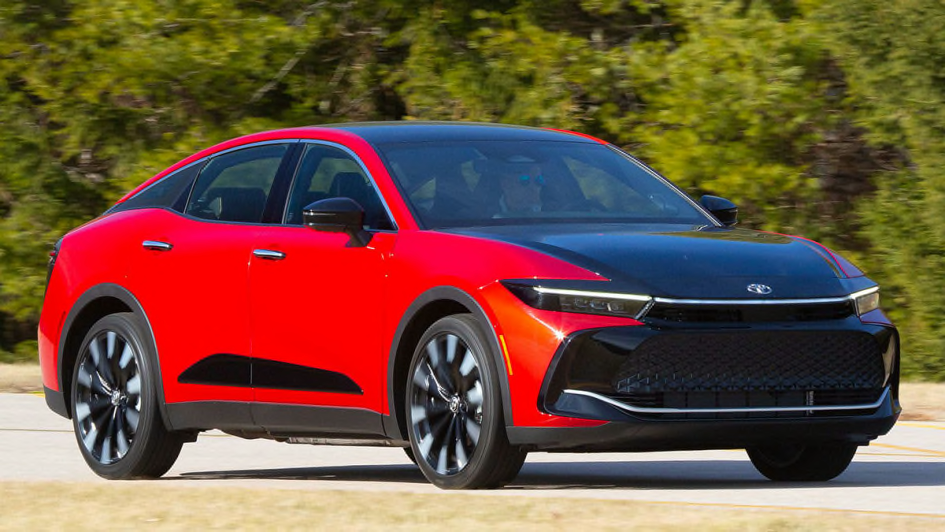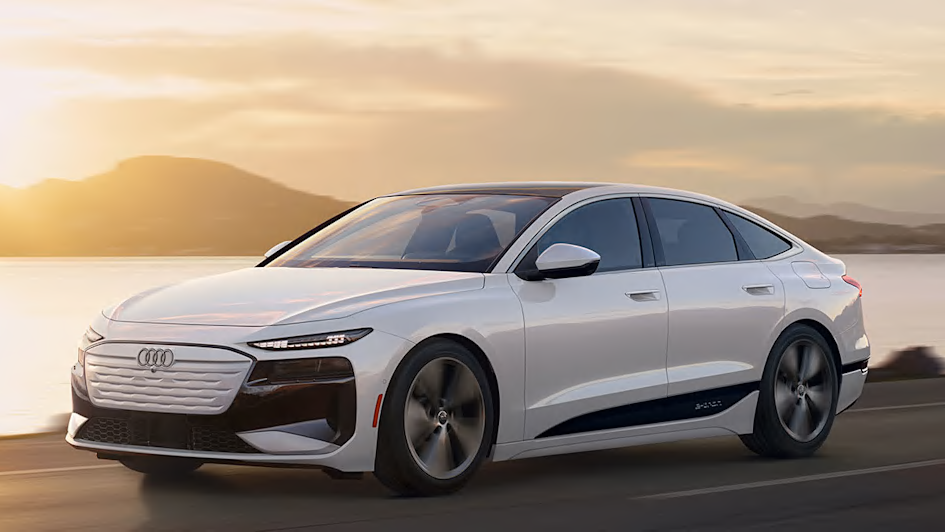
Sedan & Hatchback Buying Guide

Managing Editor, Autos

Content Specialist, Autos
Sedans, hatchbacks, and wagons come in a wide range of sizes, prices, powertrains, and levels of luxury. These traditional cars—as opposed to minivans, SUVs, and trucks—are the most cost-conscious body styles. Choosing one is a matter of aligning your needs and budget.
With the market moving to SUVs, there are fewer sedans to choose from than in years past, and some hatchbacks have evolved in the direction of SUVs, with raised roofs and all-wheel drive. Wagons have been largely replaced by SUVs, though there are some limited exceptions from European automakers.
Here are some of the benefits of buying a car:
- They tend to be more fuel-efficient than nonhybrid SUVs.
- They’re available in a wide range of prices and sizes.
- Handling and ride comfort are more of a focus than utility.
- Many are offered with all-wheel drive.
Types
Small Sedans and Hatchbacks
For many people, a small car makes sense for doing simple tasks such as commuting, running errands, and zipping around town. Some buyers are drawn to subcompact cars by the price, although we find through our member surveys that satisfaction is often lower with them than with other cars. Our advice for those shoppers is to focus on transaction prices rather than sticker prices in determining what’s less expensive. (This information is available on our car model pages.) You might find that for the real-world price of a subcompact car, like a Nissan Versa, a better compact car, like a Honda Civic or Toyota Corolla, may be within reach and could serve and satisfy you for a longer time.
With the ever-increasing demand for SUVs, automakers have taken efforts to maximize interior space and add new technology to keep shoppers interested in traditional cars. As a result, many hatchbacks have more character and functionality than staid past models, and the latest compact cars have the rear-seat room and amenities you might have expected in a midsized car only a few years ago.
What you’ll spend: Small cars can cost about $20,000, but often the actual transaction prices are well above $20,000. Assume this category spans from $22,000 to $32,000, with high-performance models and entry-level luxury cars being $35,000 or more. Figure on spending in the mid- to high-$20s for a CR Recommended model with popular features.
Midsized Sedans
Midsized sedans remain popular, led by market stalwarts such as the Honda Accord, Hyundai Sonata, Nissan Altima, and Toyota Camry. Domestic manufacturers have largely abandoned this segment, turning their attention and development dollars to crossover SUVs and electric vehicles.
The models still competing for business offer a wide variety of options to appeal to buyers. A front-wheel-drive configuration is the most common. Snowbelt dwellers now have more sedan and hatchback choices with all-wheel drive because Hyundai, Nissan, and Toyota have options.
Most manufacturers in this segment even offer hybrid powertrains to improve fuel economy. Four-cylinder engines dominate this segment, with turbos becoming common. Hybrid options from Honda and Hyundai boost fuel efficiency significantly. The latest Toyota Camry is only offered as a hybrid. These four-door green machines can return 40 to 48 mpg overall.
What you’ll spend: Common midsized sedans are priced from about $28,000 to $38,000 and offer a good combination of cost, function, and safety, addressing the needs of many drivers.
Large Sedans
This is the smallest of the sedan segments, with the Chrysler 300 and Nissan Maxima discontinued. That leaves just the Toyota Crown as the sole mainstream offering. The Crown blurs genres, with its raised height and all-wheel drive serving to tempt buyers from making the move to an SUV. A redesigned Dodge Charger is offered in electric and gas-only configurations, with two or four doors. There are still large models from most luxury brands.
What you’ll spend: Look to spend between $41,000 and $55,000 for a Crown.
Luxury Sedans
Companies such as Acura, Audi, BMW, Cadillac, Genesis, Infiniti, Lexus, Mercedes-Benz, and others sell smaller luxury sedans for those looking to own a prestige-branded car. Prices range from the mid-$30,000s to well over $50,000. While these models may offer more refinement and performance, comparable luxury—and often more space—can often be found in a top-trimmed midsized sedan for the same price. Plus, the mainstream models are typically more reliable and run on regular gas rather than pricey premium fuel.
Moving up a size or two, there are a number of choices for luxury car buyers. Long-standing nameplates such as the Audi A6, BMW 5 Series, Lexus ES, and Mercedes-Benz E-Class continue to be steady performers. Genesis (Hyundai’s upscale brand) and Tesla have made great strides in this segment. Tesla has blazed the trail for high-end electric vehicles, quickly pushing the brand from an environmentally friendly choice to a bona fide status symbol, with sales that often dwarf those of its established rivals. There’s a growing number of electric cars in this category, with more to come.
Most of these luxury coaches can be extravagantly outfitted with plush interiors, powerful engines or motors, all-wheel drive, and almost every creature comfort the automotive world can imagine. Turbocharged four-cylinder engines have become common on base trims, and some hybrid and plug-in hybrid options are available.
The ultimate in luxury continues to be dominated by the Audi A8, BMW 7 Series, Lexus LS, and Mercedes-Benz S-Class. But the Genesis G90 gives them all a run for their money. The premium flagship sedans pamper drivers and passengers, and they can be the launching point for many high-tech innovations. And as with most vehicle categories, some type of electrified propulsion is usually offered on top trims.
What you’ll spend: Prices for these well-to-do models vary widely, from the upper-$40,000s to well into six figures. The sky’s the limit here.
What Sedan Buyers Should Consider
Seating
Marketing materials claim most sedans can hold five passengers, but keep in mind that the person stuck in the center-rear position usually gets the least comfortable perch. Practically speaking, most sedans are comfortable for just four people.
Naturally, larger models have lots more headroom and legroom, especially for rear-seat passengers. Plus, their larger rear doors make entry and exit easier.
Engines and Fuel Economy
Four-cylinder engines are generally more fuel-efficient than V6s, and some of the latest four-cylinder sedans balance fuel efficiency and power quite well. In the past few years, many manufacturers have turned to combining turbocharging with four-cylinder engines to aid performance. Regular hybrids and plug-in hybrids are also available in this segment, often providing outstanding fuel economy.
Most of the buzz these days surrounds the growing choices in all-electric models. Tesla is still the dominant manufacturer here, but many more EVs are on the way from Audi, BMW, Cadillac, and Lexus, among others.
Cargo
Trunk sizes vary widely by model. Some can accommodate a week’s worth of groceries with room left over. Others have awkward shapes, high lift-overs, and intrusive gooseneck hinges that limit their usefulness. Over the past several years, some manufacturers have come out with four-door hatchback designs, such as the Audi A7, Polestar 2, and Porsche Taycan. The Cadillac Lyriq—the company’s first electric-only model—is offered as a four-door hatchback design. This body style comes with a split rear-seat design, so one part can be folded for cargo while still allowing someone to sit in the other part. Hatchbacks like these, though, can have a more restricted rear view, made worse by the heavily sloped slit of a rear window, thick back pillars, and tapering rear side windows.
Safety and Advanced Driver Assistance Systems Technologies
Consumer Reports’ safety ratings include assessments of crash-avoidance capabilities and crash-test results, based on tests done by the federal government and the insurance industry. Further, our road tests detail issues regarding child-seat installation and headlight performance.
Forward collision warning (FCW), automatic emergency braking (AEB) with pedestrian detection, blind spot warning (BSW), and rear cross traffic warning (RCTW) are crash-avoidance technologies that CR says should be standard on all vehicles. These should be on the next new or used model you buy.
FCW technology provides a visual, audible, and/or tactile alert to warn the driver of an impending collision with a car or an object directly in its path. AEB responds to an imminent collision, braking if the driver doesn’t react in time. BSW monitors a vehicle’s flanks, warning the driver that another vehicle is alongside, where it may be difficult to see. RCTW warns of traffic moving perpendicular to the car when in Reverse and can even apply the brakes if needed. It’s especially helpful when backing out of a parking space with large vehicles blocking the driver’s view on either side.
Other modern safety advances include telematics systems that can alert emergency personnel if an airbag deploys, such as GM’s OnStar service; lane departure warning systems that sound an alert if the driver changes lanes without signaling; and lane keeping assist to maintain the vehicle’s position in a lane if the driver starts to drift. (Learn more about car safety.)
Drive Wheels
A vast majority of sedans today use front-wheel drive. The space efficiency of a front-drive design allows a car to have a smaller engine compartment and a flatter floor, leaving more room inside for passengers and cargo. It’s also effective at getting going in slippery conditions because there’s more weight on the front wheels for extra traction. Rear-wheel drive is becoming rarer these days and is traditionally reserved for high-performance and luxury sedans for its inherent handling benefits. AWD is almost universally offered in every sedan segment, but not necessarily every model. Designed for improved foul-weather traction and extreme, track-ready grip on enthusiast-targeted models, some buyers who live where it snows won’t settle for less.
Towing
Most sedans offer very modest towing capacities—if any at all. Most max out at around 1,000 pounds. Clearly, if towing is in your future, an SUV or a pickup truck is the way to go.
New vs. Used
As with any type of car, the first decision to make when choosing the right car is whether you’ll buy new or used.
Buying a brand-new car certainly has its benefits. New cars have the very latest safety gear and engineering improvements, not to mention a bumper-to-bumper factory warranty. With a new vehicle, you know what you’re getting; you don’t have to worry about potential service problems or concealed collision damage. And you can have your choice of color, trim line, and option level, and financing rates are typically lower than for a used vehicle.
The key drawback to buying a new car is how quickly it depreciates. New cars have been known to shed about a third of their value in the first two to three years. Financing a new vehicle with a small down payment can easily make buyers “upside down” on the loan, where they owe more than their car is worth.
Buying a used car can save money up front and over the long haul. Plus, the U.S. used-car market is about three times the size of the new-car market, so there are plenty of choices. A 2- to 3-year-old vehicle, possibly one that has been returned from a lease, has already taken its biggest depreciation hit and should have the majority of its useful life ahead of it. Certified pre-owned cars, especially luxury models, carry the unique appeal of coming with an extended warranty, and Consumer Reports’ analysis of reliability data shows that paying a premium for a CPO car could be a wise choice.
Modern sedans, if well-maintained, can run for 200,000 miles or longer. Checking with CR’s reliability data can help you zero in on a model that might give you fewer headaches down the road.
Again, focus on reliability when selecting a good new or used car, even if the vehicle is still covered by its original factory warranty. Check with Consumer Reports to find those that have top-notch reliability scores. (See our guide to car reliability.)
Whether buying new or used, it’s important to do some homework to choose a good model and follow that up with effective negotiation.
Browse the Consumer Reports Used Car Marketplace.


















